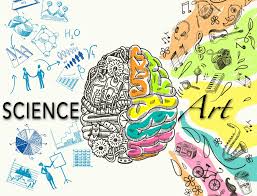Week 1: Two Cultures
The
idea of “two cultures” has been increasingly involved in my life as I continue
my academic career. As was identified by C. P. Snow in his lecture, two
cultures refer to the literary and the scientific. At a certain point of
history, these two areas became isolated and antithetical. Even though recently
a “third culture”, one that is technology oriented, has emerged, we can still
feel the estrangement of science and liberal arts.
Science and art
separated
Take
my experience at UCLA as an example. The campus is divided into two parts, the
north and the south campus, where the north represents liberal arts and the
south means science. This is a clear indication that these two areas are to
some extent incompatible and students identify themselves based on which area
they come from. Moreover, there is little chance that students from the north
and south campus to communicate, at least in my perspective, since the
geographical distributions make us harder to interact people from the other
side. Even though the general education requirements enable us to go to the
other side, it does not help much. Once we get out of the class, such
interactions almost end.
UCLA north vs.
south campus challenge
As
the world is becoming increasingly interdisciplinary, the gap between arts and
sciences needs to be eliminated. This is being done by the third culture, the
technology culture. As suggested by Kelly, the purpose of this third culture is
to “create novelties as a means to truth and experience”. Other than pursuing
truth and human expressions, the technology culture pursues novelties while
keeping scientific rigor and human conditions. Artists, as pointed out by Vesna,
are playing an important role in filling the gap between arts and science in
that they increasingly adopt scientific innovations and therefore are in active
interaction with both sides. This third culture is completely new to me and I
believe it is an effective way to bring the two sides together and create
wonders.
Interaction of
arts and science
Reference
Snow, C.P., The Two Cultures And The Scientific Revolution,
New York, Cambridge University Press, 1959. Print.
Vesna, Victoria, Toward a Third Culture: Being In Between,
Leonardo, Vol. 34, No.2.(2001), pp. 121-125. Print.
Kelly, Kevin, The Third Culture, Science Vol. 279,
Issue 5353, pp. 992-993, 13 Feb 1998. Print.
Wilson, Stephen, Myths
and Confusions in Thinking About Art/Science/Technology, College Art
Association Meetings, NYC, 2000. Print.
Bohm, David, On Creativity, Leonardo, Vol. 1, No.2. (Apr.
1968), pp. 137.149. Print.






When I look at your diagram and think about the wonder area between Science and Art, a thought came into my mind that the wonder area might be for designers. The designers not only have their artistic and creative side but also use the science and technology to actually build their products. The gap between science and art is not eliminated but have been filled to create wonders indeed.
ReplyDeleteI would somewhat disagree with your opinion that the "third culture" in between art and science is technology and technology alone. To be more precise, technology is the application of theoretical science to benefit our daily life, which does not necessarily involves art in its core. As far as I would argue, the "application of art" to our real life in the real world, is design. The combination of technology and design marks the rise of many "popular" new products (for example, the electronic products of Apple Inc., and the rising importance of UI and front-end design in software and websites), and will form "the third culture" of wonders.
ReplyDelete